Gravel garden ideas – 10 ways to create an on-trend low-maintenance space
Create a low-maintenance, drought-resistant gravel garden to cut down on watering and enjoy a wealth of Mediterranean plants. Here's how to get started...
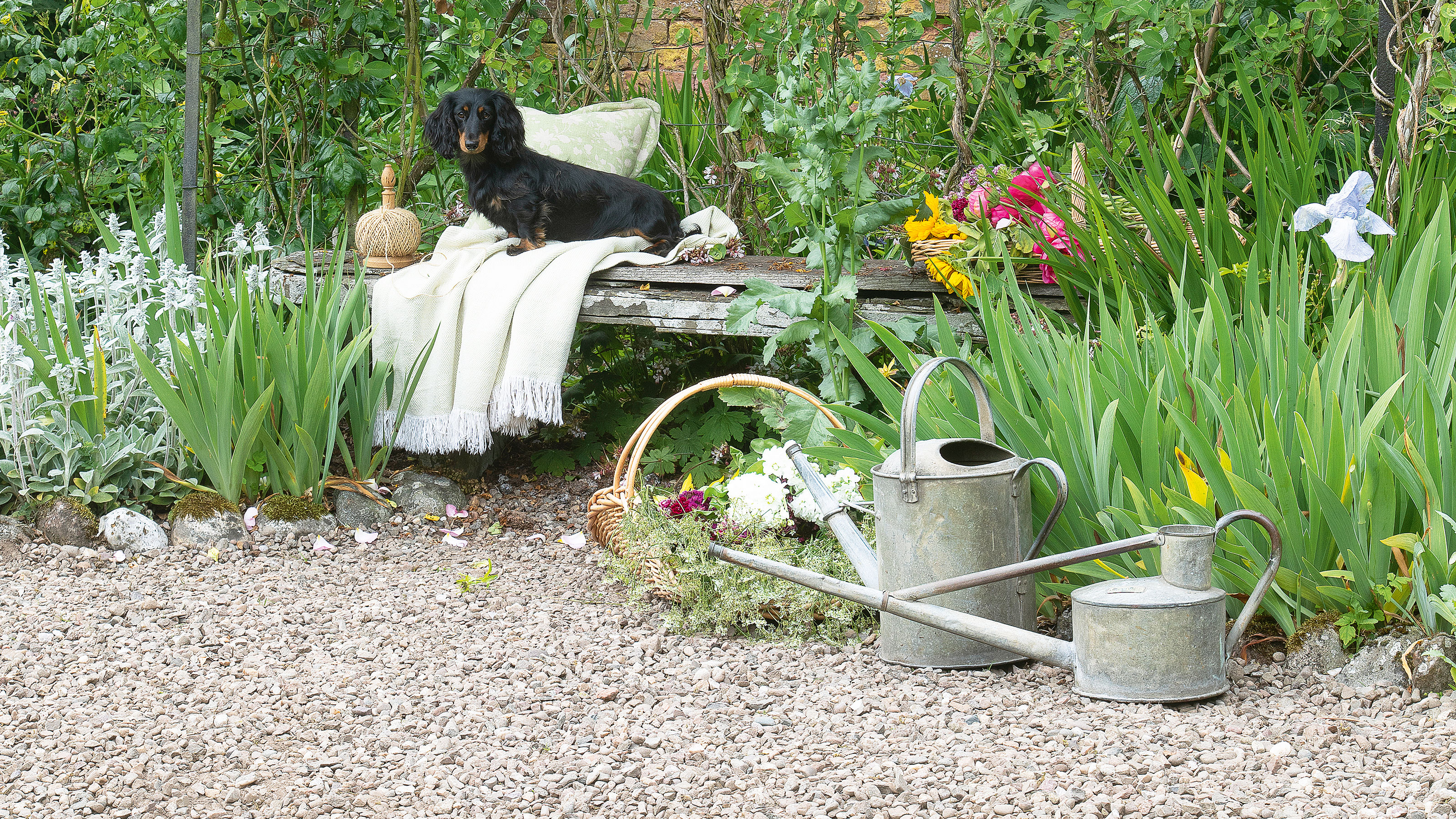
Low-maintenance, drought-tolerant, and ideal for small spaces, the gravel garden ticks numerous boxes, No wonder it is having a revival.
Don’t dismiss gravel gardens. Contemporary designs filled with easy-care, drought-tolerant planting can transform the smallest spaces into real talking points. The benefits of a gravel garden are enormous.
There is a wide range of plants that struggle without very well-drained soil, and creating a gravel garden is a great way to enjoy them to the fullest. There is no need to water and minimal weeding; plus, the aromatic and drought-tolerant plants that enjoy such dry soil tend to be more resistant to pests and disease. The only slog of a gravel border is its creation, and that can be started this spring for an abundant and bountiful garden come summer.
Gravel garden ideas
Creating a sustainable garden is now a garden trend that sits at the top of the wish list of many homeowners and gardeners alike. The importance of having outdoor spaces that are not only beautiful but also work in partnership with wildlife and help to mitigate climate change is crucial to our ecosystems. This is why more and more people are turning their attention to the possibility of gravel gardens.
When it comes to garden landscaping ideas, using local, naturally sourced materials such as stone and gravel can cut down your carbon footprint from manufacturing and transport.
So whether it's a garden layout that includes a path to your front door, a walkway that meanders around your back garden, or a destination path that leads to a particular spot, a gravel garden can enhance the look of your outdoor space.
1. Take inspiration from the Med
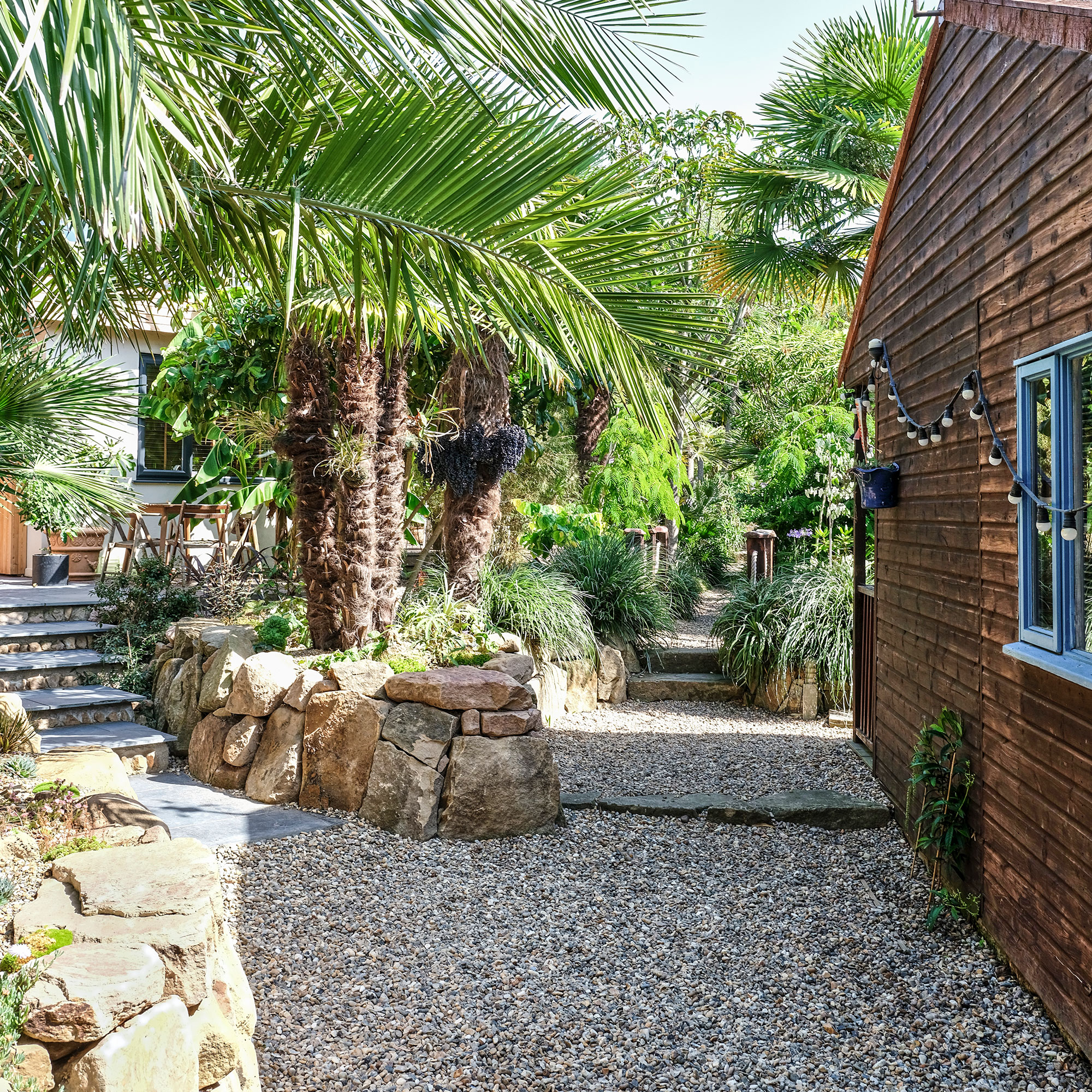
With predictions of continuing hot, dry summers from global warming and a surge in the Earth’s surface temperatures, we need to consider how this will affect our gardens. After all, making our British gardens more resistant to drought is becoming increasingly important.
Sign up to our newsletter for style inspiration, real homes, project and garden advice and shopping know-how
'Gravel is great for Mediterranean and dry gardens,' says gardener, Derry Watkins of Special Plants, 'because it’s usually winter wet that kills them. Mediterranean plants hate having wet roots. Also, the rock conserves heat. You don’t need to mix the gravel into the soil – just plonk it on top. Gravel may not seem cheap initially, but it’s low-maintenance in the long term.'
Do the groundwork now, then in spring plant drought-resistant gems, such as yucca, rosemary, helichrysum and verbena in the gravel and the roots will find their way down to the soil. When they bloom happily above the attractive stone, demanding minimal TLC, it’s easy to understand why this no-water style of gardening is becoming so popular.
2. Deter burglars with a gravel front garden
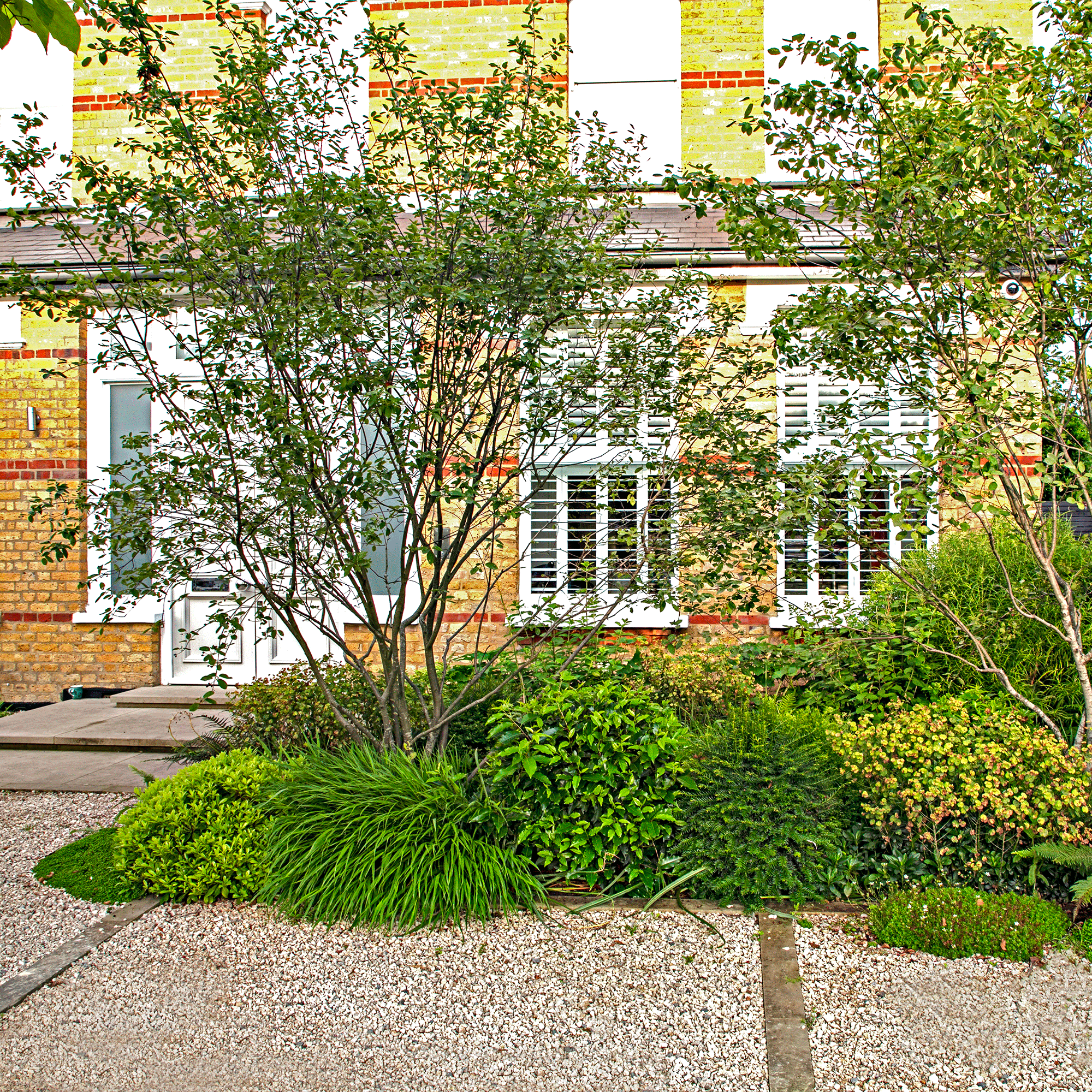
Gravel is not only pretty, cheap (prices for a bag start at £8 at B&Q) and low-maintenance, the often loud crunching noise it makes underfoot can be a good way to prevent a burglary.
Burglars hate gravel driveways and front gardens, so they often avoid them at first instance. However, you don't want it to be a nuisance for you, so invest in a gravel size that won’t easily stick in the soles of shows and get ‘walked’ into the house.
Gravel can also be used to soften hard-paved edges and to unify unrelated areas in the garden, so a gravel garden is a win-win!
3. Create a Japanese-inspired garden
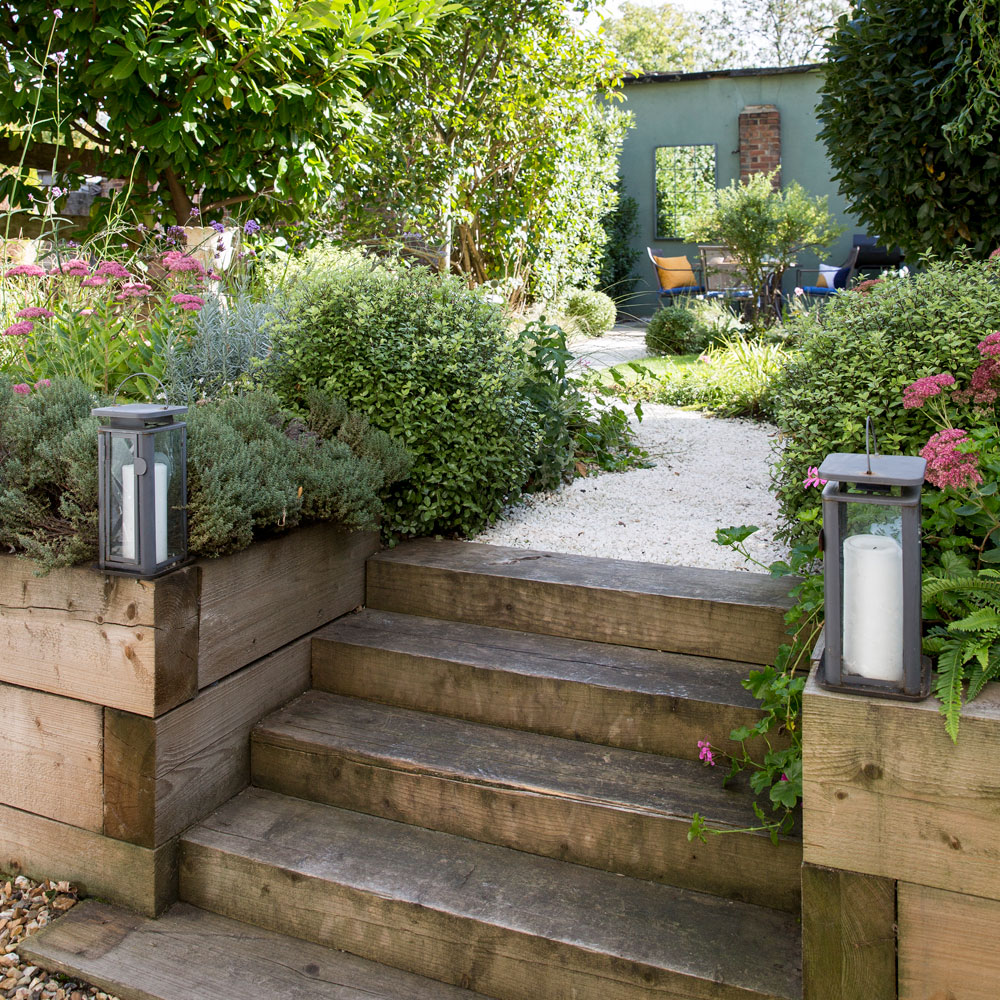
Known for their peaceful, meditative atmosphere, Japanese gardens are restrained and subtle, focusing on shape and texture rather than lots of exuberant flowers, which makes it an ideal environment for gravel.
Replace lawn or paving with areas of gravel or sand to balance planting. Arrange stepping stones in a winding path through the garden (avoid straight lines), and arrange large stones, or groups of pebbles, as focal points to give a sense of rhythm. You can also rake gravel or sand into circles or lines around the stones to represent rippling waves or flowing water.
For zen garden ideas, think ‘less is more’ – a pared-back look and restricted colour palette help to promote a sense of calm.
4. Use gravel to surpress weeds
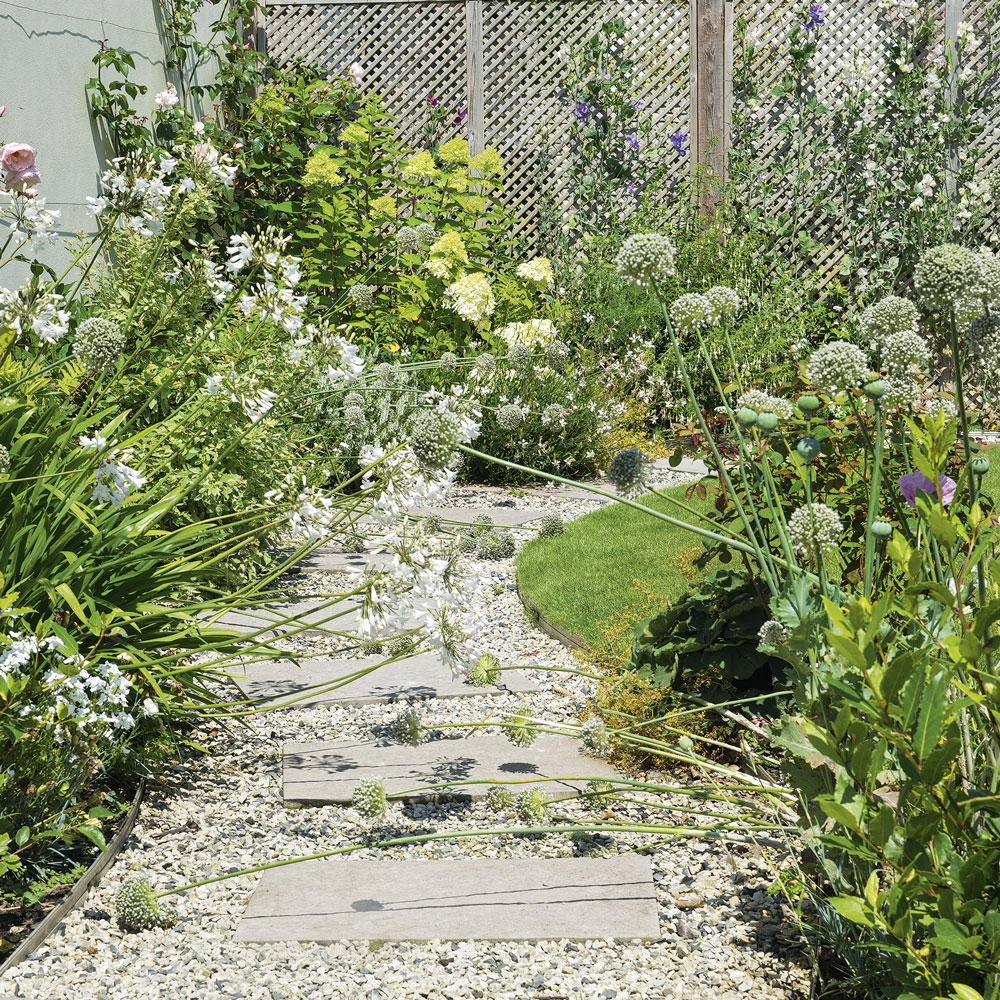
If your garden is a breeding ground for weeds come summer, then gravel may be the answer you are looking for.
Weeds grow less easily than they would in rich soil and ground-cover plants can spread comfortably without being swamped by competitors. A gravel garden is a good option, suppressing the germination of weeds almost entirely. Unlike mulches such as chipped bark, it won’t create rotting.
This balance between plant and stone is characteristic of Mediterranean landscapes – a popular garden trend this year.
5. Lay gravel for a beautiful, meandering path
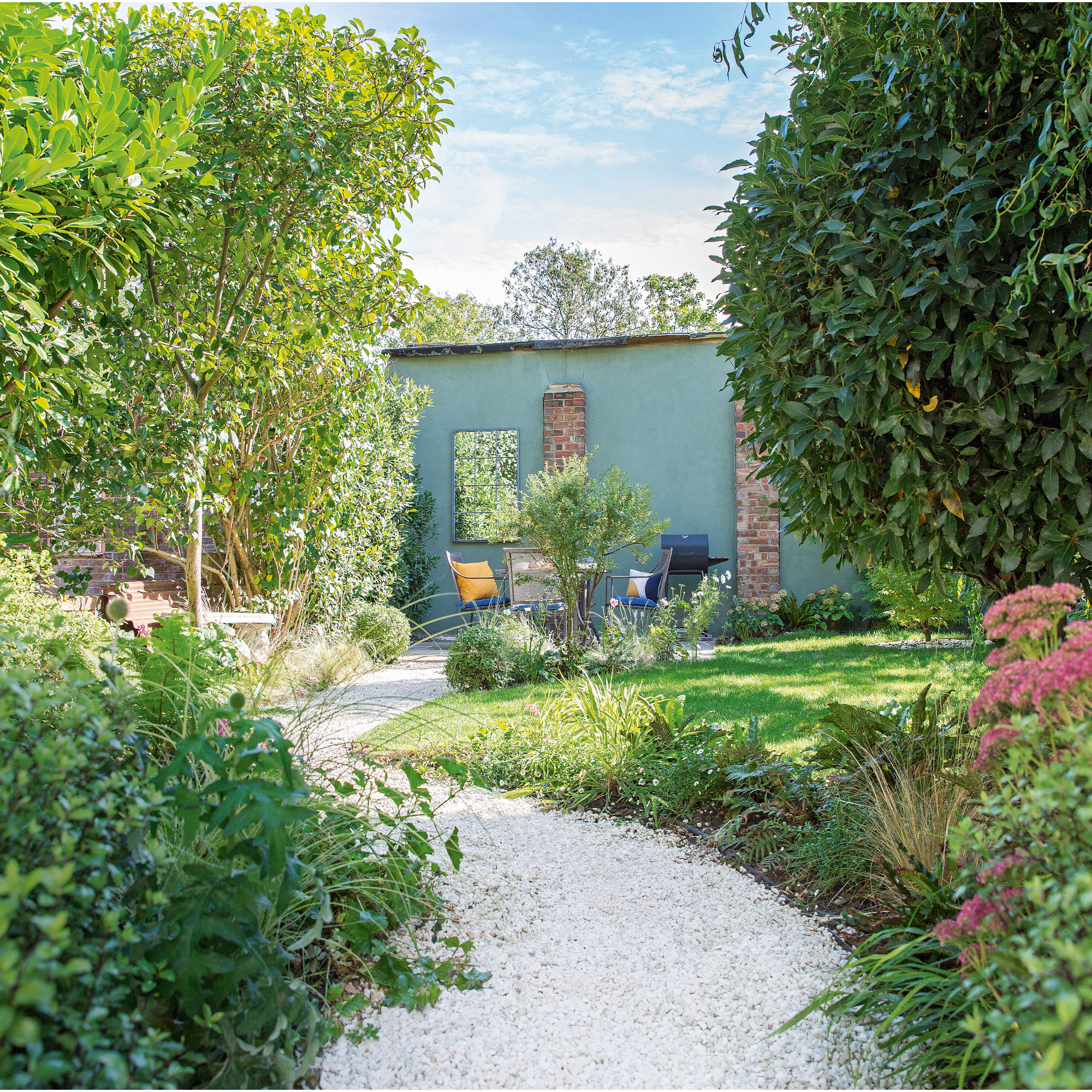
Garden path ideas are a great way to define and separate areas of your garden and encourage visits to the furthest corners.
Gravel paths are economical, easy to construct and work particularly well in both city and country gardens, either with neatly defined visible edges, or plants spilling over and hiding the boundary that contains them.
A compact base is essential, which could be the existing soil if it’s hard clay, or otherwise, a tamped down stone pack or hardcore; a lining of landscape permeable membrane, available on Amazon, will help suppress weeds.
Gravel and hoggin – a mix of gravel, sand and clay that binds yet allows water to drain – are ideal for dry gardens, which could become more common with climate change. Most self-binding, or self-compacting, gravels, tend to be quarried locally, adding to their eco-credentials.
6. Choose gravel for a low-maintenance space
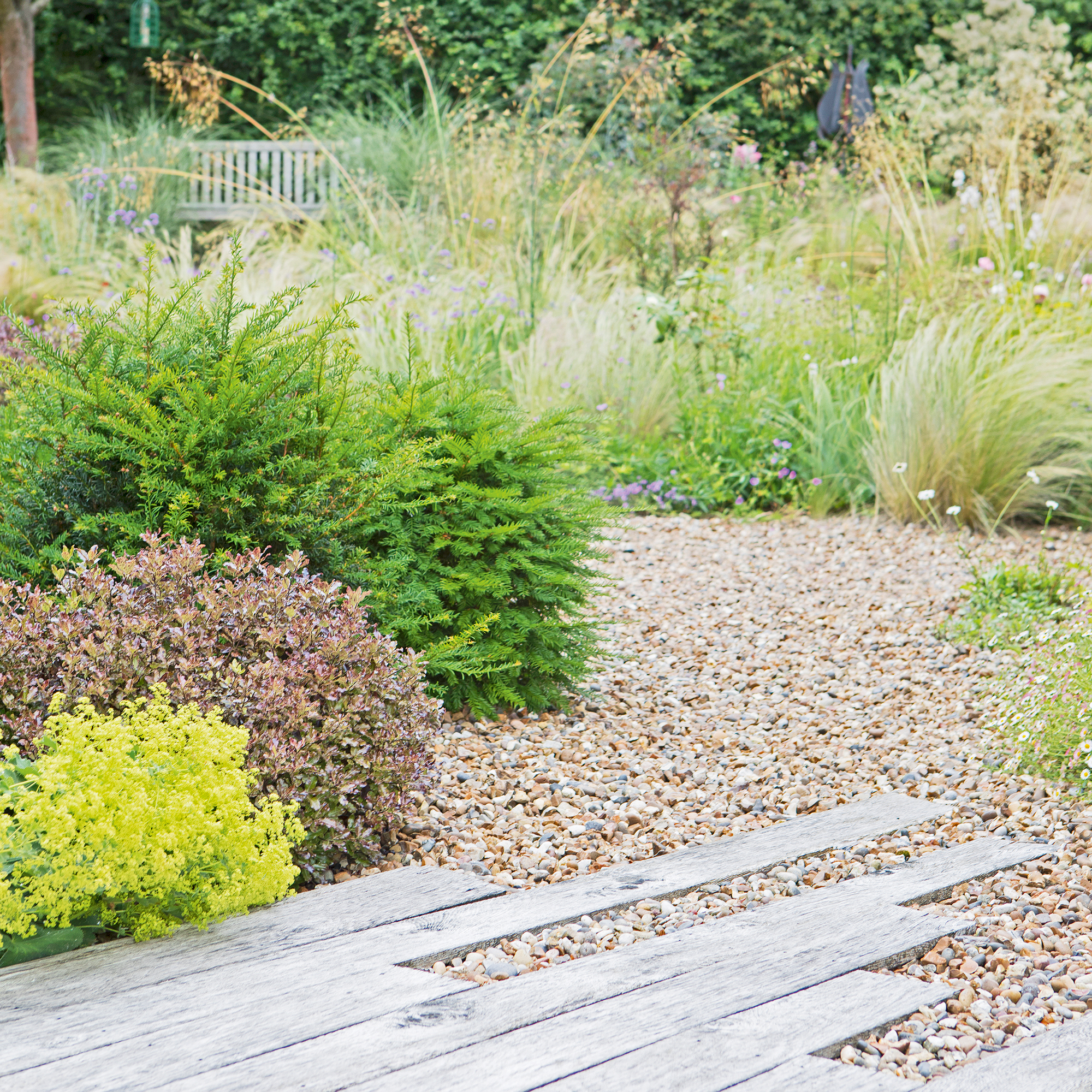
If you are time-poor, or just not very green-fingered, then a gravel garden is an easy option. If you create a gravel garden correctly, it will be the most low-maintenance part of your garden. Save for cutting things back and removing leaves, there is little to do.
Ideal for an informal path, gravel looks softer than solid paving and comes in a range of colors. It’s also relatively inexpensive, easy to lay, and allows rainwater to soak through, helping to prevent flooding.
Before you begin, it’s vital to first remove all perennial weeds first, and get the right balance of soil and gravel – for example, if you don’t put a thick enough layer of gravel onto heavy soil, you will get weeds.
7. Go for an eco-friendly option
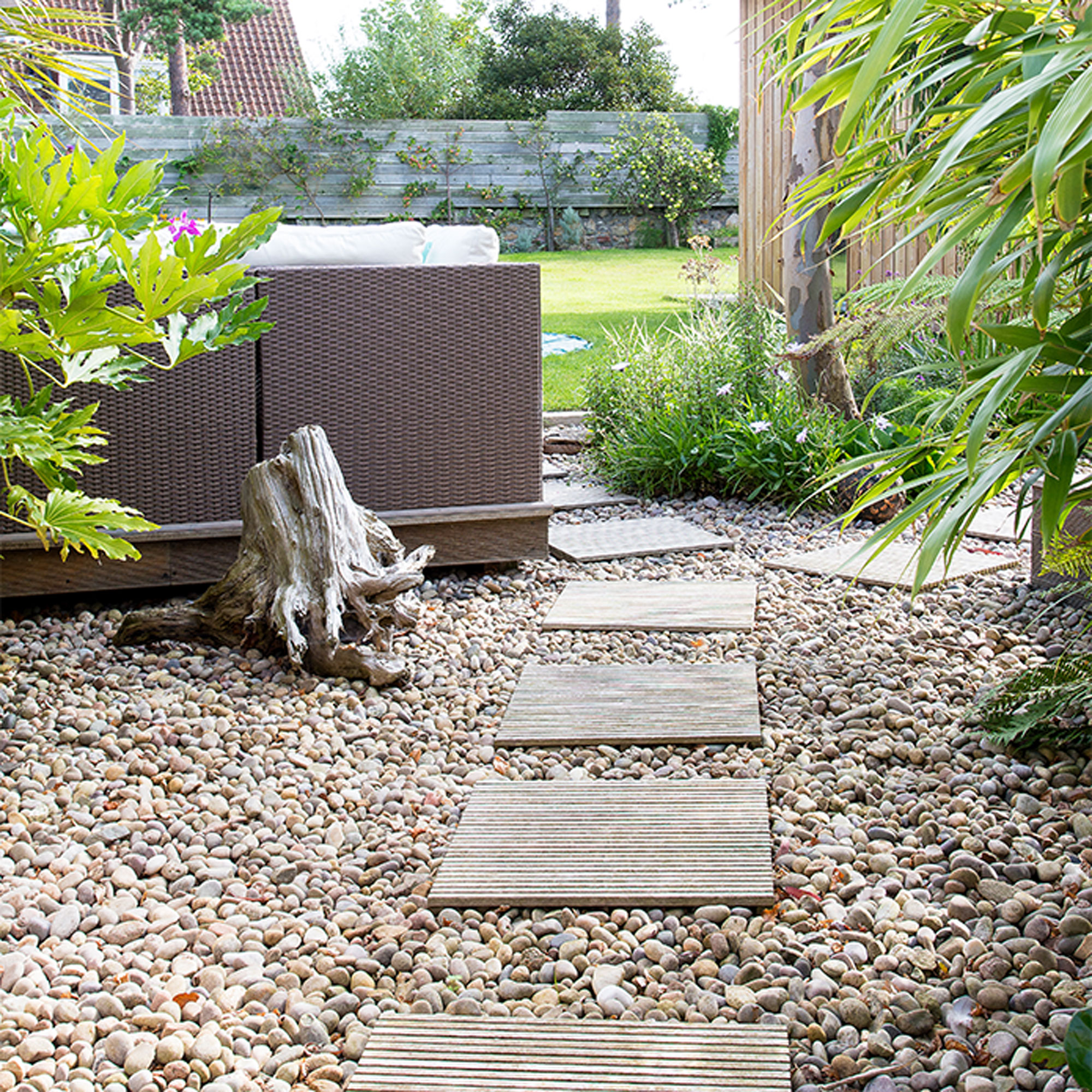
If you're hoping to create an outdoor space that is not only low-maintenance and affordable but also one that is sustainable, then gravel paired with part-recycled decking of scaffolding boards is a fantastic option.
‘Recycled or upcycled materials offer great options for gravel pathways. Used scaffolding boards or part-recycled composite materials, such as decking is a good choice,’ says Amelia Bouquet, owner, of Amelia Bouquet Garden Design.
‘Treat scaffolding boards with an eco-friendly wood preservative to deter rot, and ensure they are not in direct contact with the soil. For a flood-resistant gravel pathway, try clay pavers. Lay them on a sub-base of free-draining sharp sand to make your path permeable, with an edging set on a mortar base for stability.'
When selecting materials, be aware that some stone has questionable origins – for instance, strip-mining gravel from the seabed can kill marine life. Where possible, buy recycled aggregates and stone from salvage yards; or, if purchasing new stone, ensure it has come via an Ethical Trading Initiative company.
8. Make sure to choose the right plants
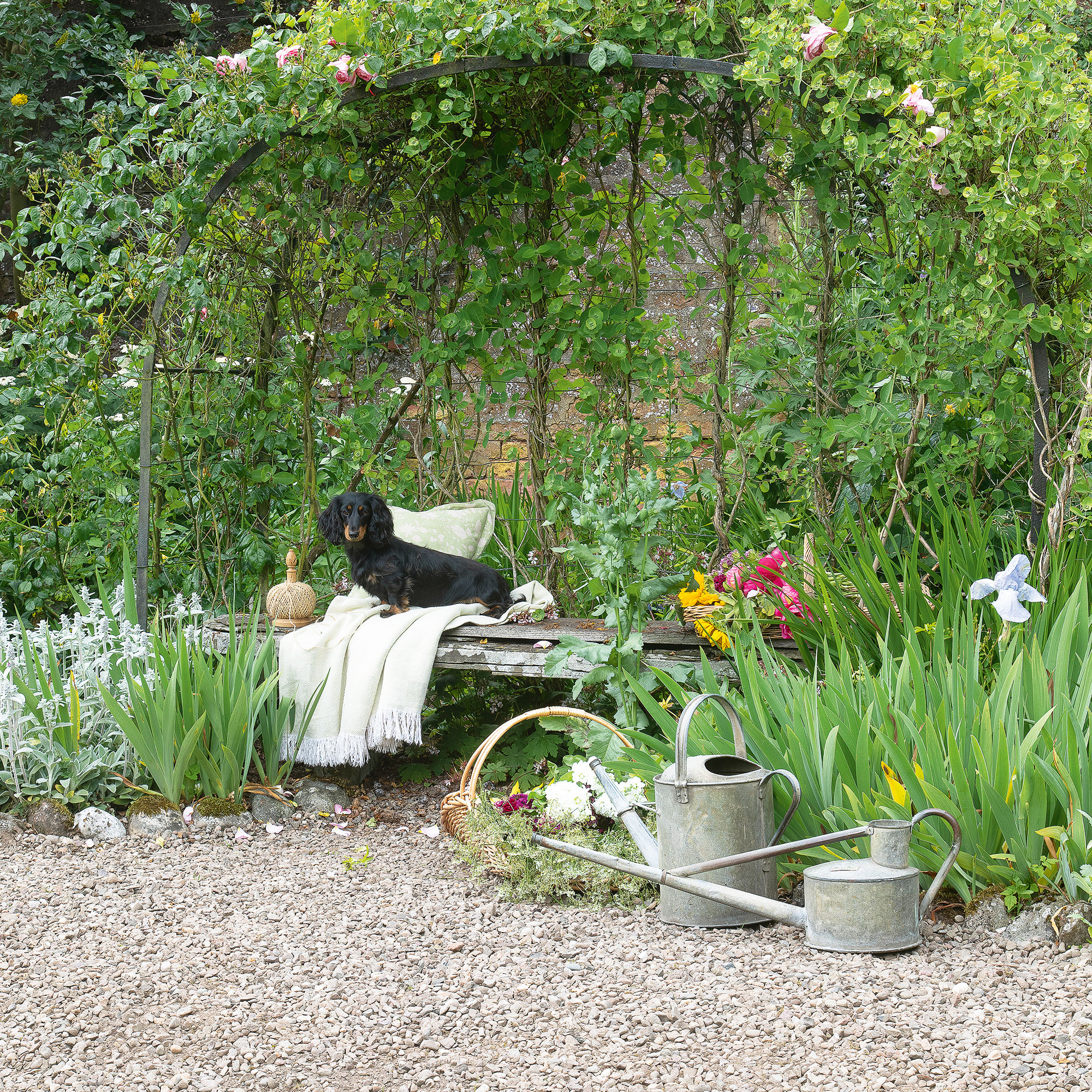
Many drought-resistant plants originate from the Mediterranean, growing naturally in dry, stony soil. It is no surprise, then, that they flourish in British gravel gardens where a layer of aggregate keeps roots cool and minimises evaporation, while also protecting them from frost.
When it comes to choosing plants, focus on frost-resistant, evergreen species, interspersed with bulbs to add a seasonal splash of colour – allium and species tulips in spring; foxtail lilies and agapanthus in summer; and for autumn, Hesperantha coccinea and nerines.
Rock roses, lavender and euphorbias are also great choices in a gravel garden. Then, to add spontaneity, encourage self-seeders such as hellebores and poppies for effortless colour.
9. Lay down gravel to deter slugs

While it is not entirely possible to eliminate slugs from gardens completely. You can, in fact, control these often-abundant pests by creating physical barriers at ground level.
As well as being a good weed suppressor, and burglar deterrent, gravel (and coarse sand) will deter slugs and snails from any surrounding vulnerable plants and flowers.
10. Set up a seating area

Gravel is one of the best small patio materials and so if you’re using it as part of your modern rock garden or Mediterranean garden then consider leaving space for a sublime garden seating idea.
Be sure to have a decent-sized space in a prime sunny spot, as shown here. Then add a selection of the best garden furniture, such as a bistro table and chairs or sun loungers to create a private area for relaxation. You'll instantly feel like you've escaped on a holiday to the Med.
How can I make my gravel garden look nice?
Making a gravel garden look nice is much easier than you might think, and it can even become a feature in its own right.
A gravel garden is a practical option and is low-maintenance with no lawn to mow. Therefore, ensuring that it remains weed-free is essential if you want it to stay pretty.
Select a sunny, well-drained and weed-free area; although any soil type is possible, sandy or gravelly soil works best. To avoid plants self-seeding, place landscape fabric over the soil and cut crosses to insert the plants, then add a layer of gravel between 5 to 8cm thick.
Gravel is available in a wide range of colours and sizes, so select a colour that works with other hard surfaces and structures in the garden. Local gravels are generally cheaper.
Be vigilant with weeding in the first few years until the plants are large enough to suppress them. Self-seeding plants will pop up and give the garden a natural look; if they are a bit too promiscuous simply remove some. Good plant choices include herbs, erigeron, stipa, euphorbia and nepeta.
What can I put in my garden with gravel?
There is so much you can put in a garden with gravel. The decorative, and not to mention wildlife-friendly, possibilities are endless.
Create blurred boundaries and transitional zones between features such as a lawn, pond and garden borders using gravel and pebbles. Opt for a traditional rockery or a more contemporary gravel garden; use coloured aggregates to brighten a shady corner; and play with a mix of stones, such as boulders, cobbles and pebbles, to add movement and energy to your plot.
Start building gravel garden now for a late summer showpiece – and a beautiful, low-maintenance garden feature for years to come awaits.
Jennifer is the Deputy Editor (Digital) for Homes & Gardens online. Prior to her current position, she completed various short courses a KLC Design School, and wrote across sister brands Ideal Home, LivingEtc, 25 Beautiful Homes, Country Homes & Interiors, and Style at Home.